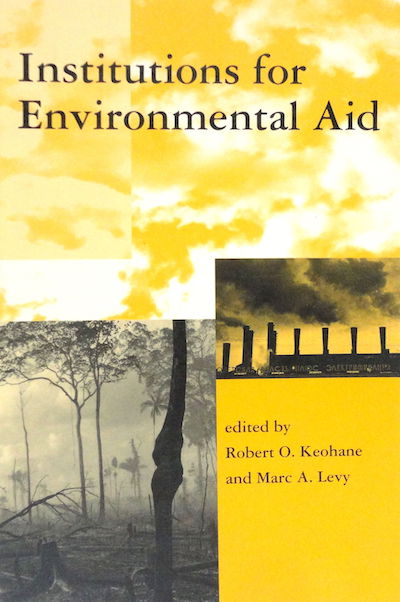Edited by Robert O. Keohane (NHC Fellow, 1995–96) and Marc A. Levy

Cambridge, MA: MIT Press, 1996
From the publisher’s description:
The discrepancy between levels of environmental quality of rich and poor countries will continue as long as large per capita gaps in income persist. Institutions for Environmental Aid draws on research from economics, international relations, and development assistance, as well as the growing literature on international environmental relations, to evaluate the effectiveness of international institutions designed to facilitate the transfer of resources from richer to poorer countries, in conjunction with efforts to improve the natural environment. Looking at the Global Environmental Facility, aid arrangements associated with the Montreal Protocol on the ozone layer, environmental operations of world financial institutions (with respect to aid to Eastern Europe and efforts to save tropical forests), debt-for-nature swaps, and the Rhine River, Institutions for Environmental Aid asks whether they increase concern, improve the contractual environment, and increase national capacity—functions identified in a companion study, Institutions for the Earth. The authors of this carefully planned collaboration observe that although there is some evidence of effectiveness in these terms, conflicts of interests within and between states, and involving nongovernmental and intergovernmental organizations, are frequently debilitating; successful initiatives result from a combination of favorable constellations of interests and creative, dedicated leadership.
Subjects
Economics / Environment and Nature / Economic Development / Environmental Studies / International Relations / Environmentalism / Politics / Wealth Inequality / International Economics /Keohane, Robert O. (NHC Fellow, 1995–96), ed. Institutions for Environmental Aid: Pitfalls and Promise. Edited by Robert O. Keohane and Marc A. Levy. Global Environmental Accords Series: Strategies for Sustainability. Cambridge, MA: MIT Press, 1996.